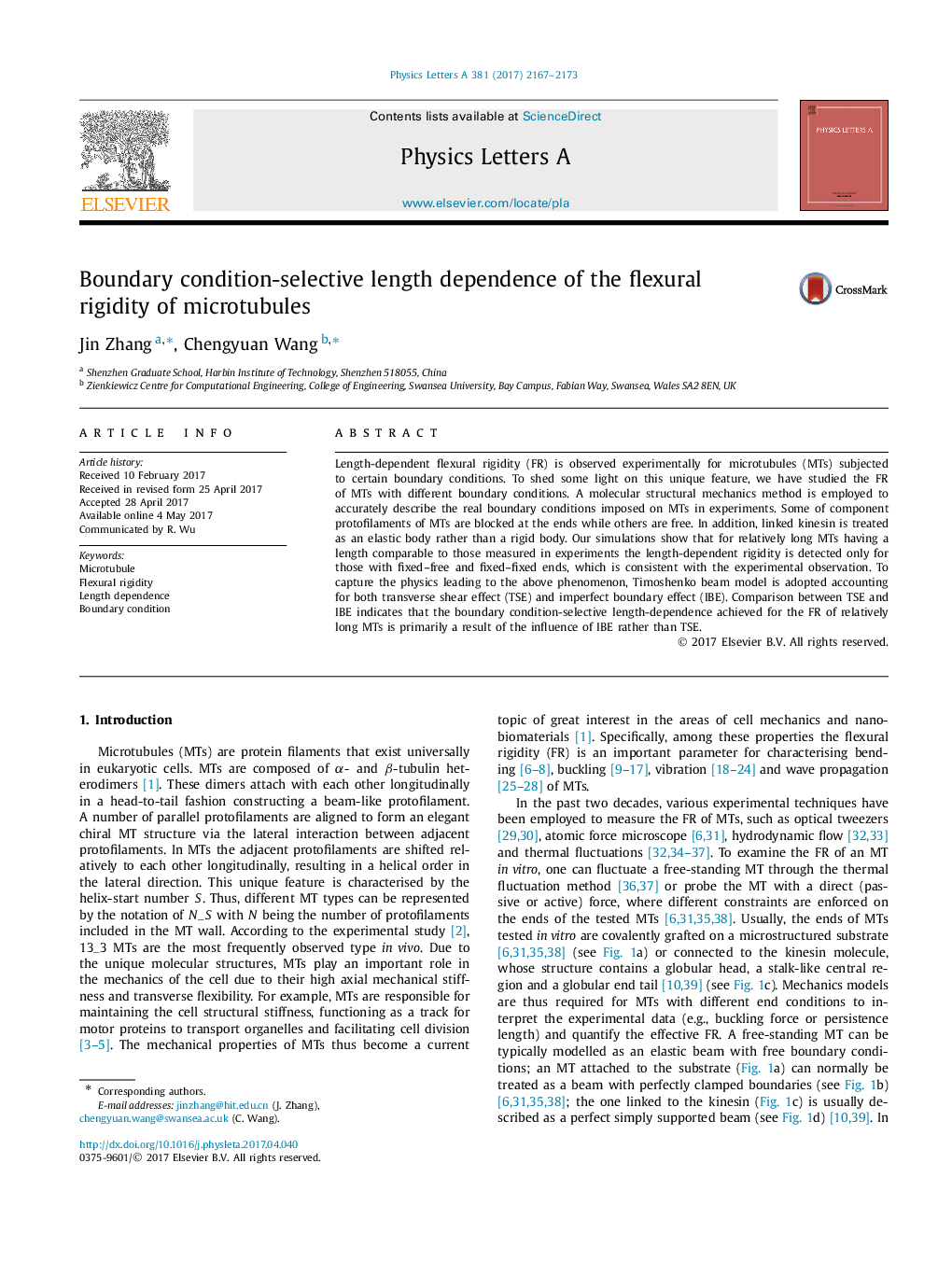| Article ID | Journal | Published Year | Pages | File Type |
|---|---|---|---|---|
| 5496287 | Physics Letters A | 2017 | 7 Pages |
Abstract
Length-dependent flexural rigidity (FR) is observed experimentally for microtubules (MTs) subjected to certain boundary conditions. To shed some light on this unique feature, we have studied the FR of MTs with different boundary conditions. A molecular structural mechanics method is employed to accurately describe the real boundary conditions imposed on MTs in experiments. Some of component protofilaments of MTs are blocked at the ends while others are free. In addition, linked kinesin is treated as an elastic body rather than a rigid body. Our simulations show that for relatively long MTs having a length comparable to those measured in experiments the length-dependent rigidity is detected only for those with fixed-free and fixed-fixed ends, which is consistent with the experimental observation. To capture the physics leading to the above phenomenon, Timoshenko beam model is adopted accounting for both transverse shear effect (TSE) and imperfect boundary effect (IBE). Comparison between TSE and IBE indicates that the boundary condition-selective length-dependence achieved for the FR of relatively long MTs is primarily a result of the influence of IBE rather than TSE.
Related Topics
Physical Sciences and Engineering
Physics and Astronomy
Physics and Astronomy (General)
Authors
Jin Zhang, Chengyuan Wang,
